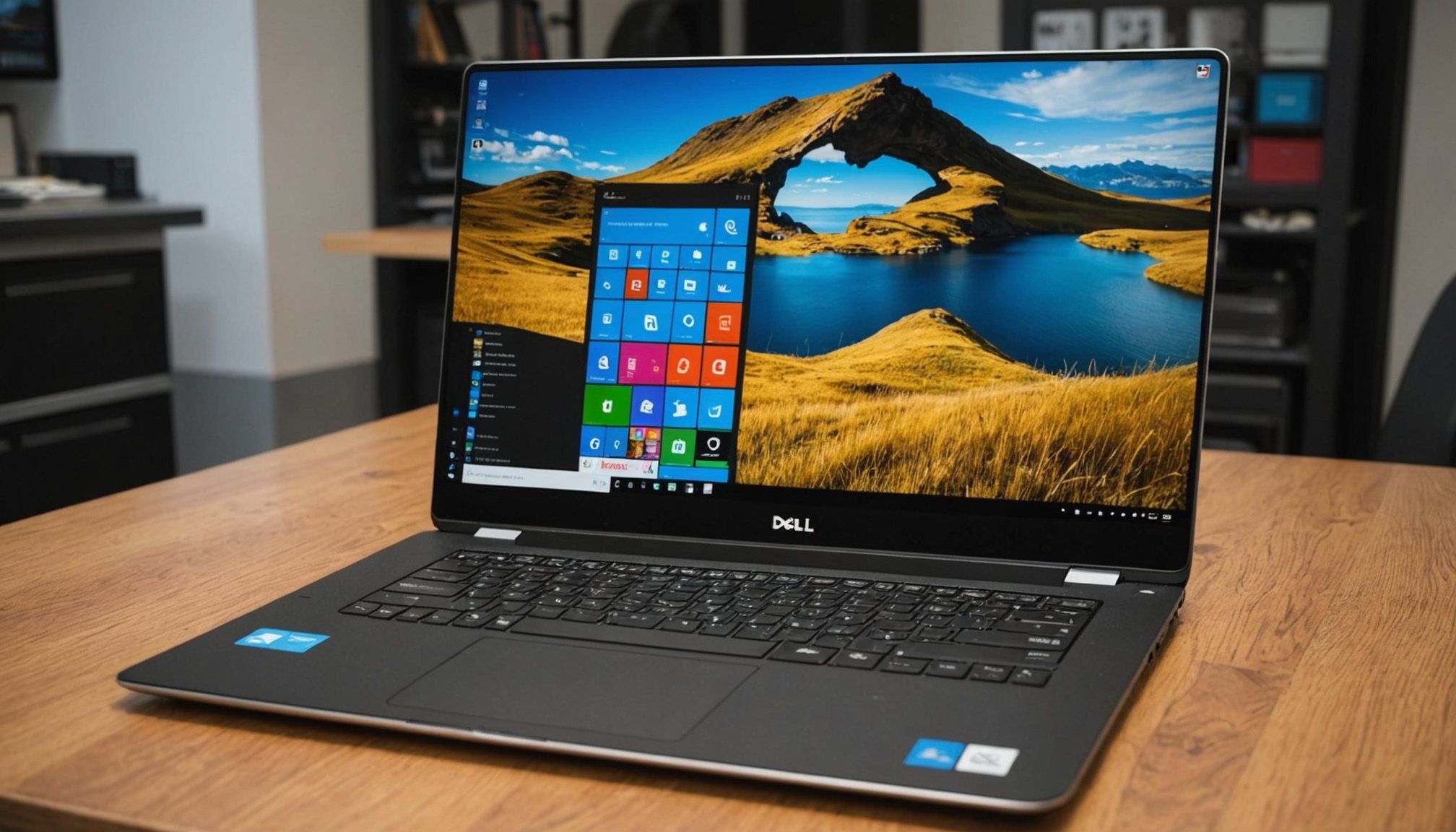Prerequisites for Dual Booting
Before embarking on the journey of dual booting your Dell XPS 15, ensuring the proper prerequisites is crucial. Meeting the system requirements serves as the foundation for a seamless installation. The Dell XPS 15 boasts impressive specifications, such as a sufficient amount of RAM and storage capacity that readily support the dual operating systems you plan to use.
To set up your dual boot, you need specific software and tools. A reliable boot manager is essential for managing multiple operating systems. Additionally, ensure that you have access to bootable USB drives containing the installation files of both operating systems. You’ll also require partition management software to allocate appropriate disk space for each system.
A critical step in the dual booting process is implementing comprehensive backup procedures. This precaution is vital to ensure that your valuable data remains secure and intact. Using external hard drives or cloud storage solutions to back up all important files before starting the installation can prevent potential data loss.
Ultimately, understanding the prerequisites for a successful dual boot on your Dell XPS 15 is key. With the right preparation in place, you can confidently explore and harness the capabilities of multiple operating systems on your device.
This might interest you : Ultimate guide to creating a secure guest wi-fi network using google nest wifi: a step-by-step approach
Preparing the Installation Media
Creating installation media is an essential step whether you’re setting up Windows 10 or Kali Linux.
To create a bootable USB for Windows 10, start by downloading the official Windows 10 installation media from the Microsoft website. Use the Media Creation Tool for ease of access. Insert your USB drive (minimum 8 GB) and run the tool. Select the “Create installation media” option and follow the prompts to turn your USB into a bootable device.
For Kali Linux, download the Kali Linux ISO from its official site. Use a tool like Rufus which supports creating a bootable USB from an ISO image. Launch Rufus, select your USB drive, choose the Kali Linux ISO file, and press “Start.” Ensure the USB has sufficient space, preferably 8 GB or more.
Verification and troubleshooting are key if issues arise. Start by confirming the integrity of the ISO files through checksums. Ensure your USB is detected by your BIOS during boot. If boot issues persist, reformat your USB and carefully repeat the steps. This method guarantees a reliable installation process, opening up opportunities to maximize the functionality of both Windows 10 and Kali Linux.
Partitioning the Hard Drive
When setting up a dual boot system with Windows 10 and Kali Linux, partitioning the hard drive effectively is essential. This ensures both systems have adequate space and functionality without one disrupting the other.
Understanding Partition Types
Before diving into the partition process, it’s important to grasp the differences between primary and logical partitions. A primary partition is bootable and is recognized by system BIOS or UEFI firmware. In contrast, logical partitions reside within an extended partition, mainly serving to partition data. Most commonly, Windows requires a primary partition for booting, while Linux distributions such as Kali Linux can efficiently run on logical partitions.
Using Disk Management in Windows
Windows 10 provides a built-in tool called Disk Management to facilitate disk operations. This tool allows you to shrink existing partitions to create unallocated space for new partitions. To access Disk Management, right-click on ‘Computer’ or ‘This PC’ and select ‘Manage.’ Navigate to ‘Disk Management’ to view and manage your partitions.
Creating Partitions for Kali Linux
When allocating space for Kali Linux, consider setting aside at least 20GB for optimal functionality. Your Kali Linux partition can be either primary or logical, though logical is often recommended as it offers more flexibility. Create approximately 4GB for the swap partition to enhance performance and manage memory usage efficiently. By keeping these recommendations in mind, dual boot partitioning can be streamlined and precise.
Installing Windows 10
Setting up Windows 10 on a dedicated partition can enhance your computer’s functionality. Follow this Windows installation guide to begin the process and ensure that your system is configured optimally.
To start, obtain a legitimate copy of Windows 10 and create a bootable USB drive. Insert the USB drive into your Dell XPS 15 and restart the computer. Press the key prompted on-screen to enter the boot menu. Select the USB drive as the boot option to begin the installation process.
Once the Windows installer is running, select “Custom Install” to access the partition options. Create a new partition to install Windows 10 specifically, which allows for a dual boot with another operating system if desired.
During the installation, it’s crucial to optimize settings for your Dell XPS 15. Choose a language, time, and currency format suitable to your preferences. Additionally, enable system updates and device drivers to prepare the system for installation.
To ensure optimal performance, it’s advised to allocate at least 50GB to the Windows partition for storage. Finish the installation by following on-screen instructions, setting up a user account, and adjusting privacy settings to your preference.
Installing Kali Linux
Installing Kali Linux might seem daunting, but with a structured approach, it becomes manageable. Here’s a detailed walkthrough to guide you through the process.
Begin by downloading the Kali Linux ISO file from the official website and create a bootable USB drive. Boot your computer using this drive to start the installation process. On the boot menu, select “Install.” Follow the on-screen prompts to choose your preferred language, location, and keyboard configuration.
Configuring Partition Settings
When you reach the partition disk stage, you may choose between guided or manual partitioning. Opting for a dual boot? You need to allocate a separate partition for Kali Linux. Resize your existing partition to free up space, or create a new partition if space is available. During manual partitioning, ensure that a minimum of 20GB is allocated to Kali, with a partition for swap space for optimal performance.
Important Post-Installation Configurations
Once Kali Linux is installed, focus on post-installation configurations. Update your system repositories by using the terminal commands sudo apt update and sudo apt upgrade. Consider installing essential network tools and software required for your tasks. Lastly, regular system and package updates ensure that your version of Kali Linux is secure and efficiently running.
Configuring the Bootloader
Setting up a dual boot system can be a straightforward way to experience multiple operating systems on a single machine. GRUB (Grand Unified Bootloader) plays a pivotal role in this process, acting as the interface between the hardware and your operating systems. When it comes to bootloader configuration, understanding GRUB is crucial for a successful dual boot setup.
To begin with, after an OS is installed alongside another, GRUB installation typically occurs automatically. However, manual configuration might be necessary for customization or if you encounter issues. Here’s a simple step-by-step guide:
- Access Your BIOS/UEFI Settings: Ensure your boot priority is set correctly.
- Update GRUB Configurations: Boot into a Linux terminal and update GRUB by running
sudo update-grub. - Reinstall GRUB: If issues persist, it may help to reinstall. Use
sudo grub-install /dev/sdX, replacing X with your device identifier. - Check Configuration Files: Navigate to
/etc/default/grubto edit options such as boot delay.
Troubleshooting common bootloader issues is part of the process. If you find that an OS isn’t appearing in GRUB, re-examine your installation steps or check for updates. Configuring the bootloader successfully ensures smooth transitions between systems, offering a seamless dual boot experience.
Troubleshooting Common Issues
When facing dual boot troubleshooting, common problems often emerge, mainly around installation errors and boot failures. One of the first obstacles users encounter post-installation is fixing boot issues. This typically involves configuring the boot loader correctly. If the boot loader isn’t recognizing your systems, using tools like the Boot Repair Disk can automate the correction process efficiently.
Another challenge is partition recognition problems. If your system cannot identify specific partitions, double-check their configuration in your system’s BIOS or UEFI settings. Ensure each partition is correctly flagged, especially if you’ve resized or created new partitions prior to installation.
What should you do if one OS fails to boot? You can explore recovery options. Safe Mode is a great starting point for Windows repairs; it allows system recovery without triggering problematic drivers or startup programs. For Linux, using a live USB to boot and chrooting into the installed system can help fix boot loader mishaps without reinstallation.
By understanding these steps, users can mitigate the most common dual boot challenges effectively, ensuring smoother operational experiences with multiple operating systems installed.
Additional Considerations
When dual booting, maintaining optimal performance across both operating systems can seem daunting, but there’s a method to ensure smooth operation. Always allocate sufficient partition space for each system, thus preventing disk overuse which can severely hinder speed.
Adhere to best practices for dual-booting by keeping data storage separate from operating system partitions. This separation simplifies data management and reduces cross-system conflicts. Regularly optimizing performance by defragmenting HDDs—though SSDs do not require this—can mitigate potential sluggishness.
After your installation, it’s crucial to execute recommended system updates. These updates often include necessary patches and the latest drivers, ensuring stable and secure operation. For Linux users, using commands like sudo apt update && sudo apt upgrade or yum update, depending on the distribution, can be beneficial in maintaining the system’s integrity.
Additionally, consider setting up a shared data partition formatted in a file system compatible with both OS, like exFAT. This facilitates smooth file sharing without compatibility hitches. Regularly check the boot order and update bootloader settings to avoid accidental boot errors, which could disrupt operations across platforms.
Employ these strategies to ensure your dual-boot setup operates seamlessly and persistently.











